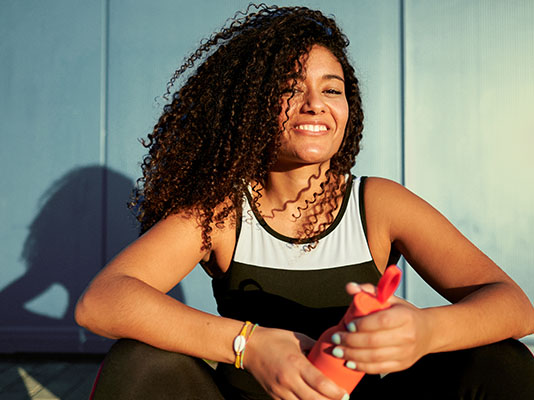About one in three Canadians will get shingles. But timely treatment can lessen symptoms, and a vaccine can help prevent it.
How service dogs help Canadians living with diabetes
Trained noses help diabetes service dogs sniff out their owners’ low blood sugar – and even save their lives. That’s dogged determination.

Ukita is a 2-year-old yellow Labrador retriever who loves hitting the golf course with her owner, Cory Carter, an electrician from Langley, B.C. Off the golf course, she follows Carter from site to site, joyfully wagging her tail and occasionally carrying his tool belt. While Carter is hard at work wiring homes, Ukita works too, vigilantly smelling Carter’s breath to detect if his blood sugar suddenly drops.
“I look at [having a diabetes alert dog] as another tool in the fight against diabetes, especially if you’re at your last straw,” says Carter.
Carter, 28, has had type 1 diabetes since he was 10. When his blood sugar drops, he experiences hypoglycemia, a dangerous condition that can cause convulsions or even a coma. Most people notice when their blood sugar drops: Their hands tremble, they feel dizzy and they may even break into a cold sweat. But some people with diabetes, like Carter, are hypoglycemic-unaware. They don’t show the typical signs of hypoglycemia, so they need to be extra-vigilant about monitoring their blood-sugar levels.
- Learn more about the difference between type 1 and type 2 diabetes
Carter has used a series of tools to treat his diabetes since his diagnosis, but in recent years, he felt he needed more help. So last January, Carter and his wife flew from Langley to Oakville, Ontario to meet Ukita, one of the Lions Foundation of Canada’s diabetes alert dogs.
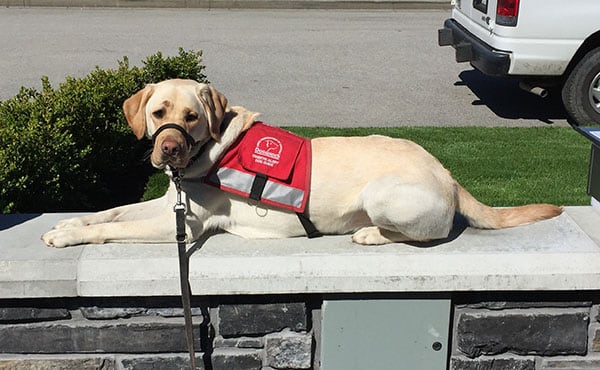
Ukita, a diabetes service dog, at home in Langley, B.C.
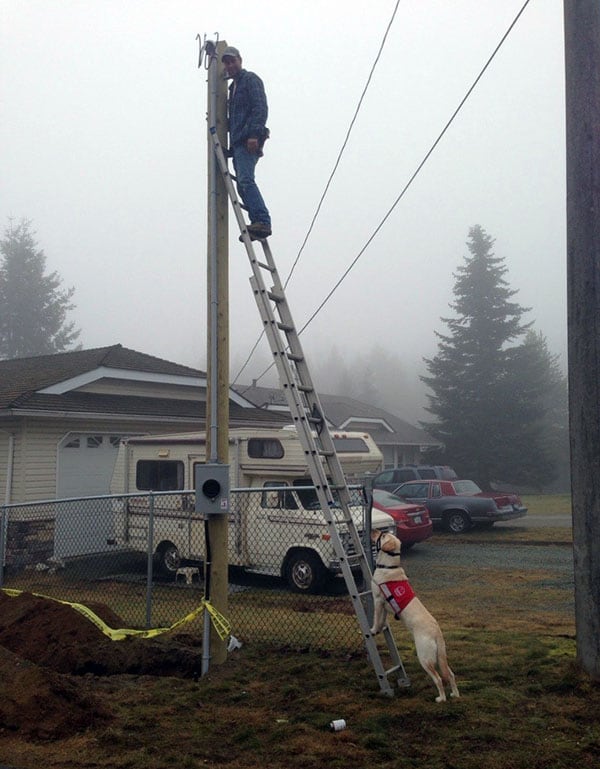
As electrician Cory Carter visits worksites, his diabetes service dog Ukita accompanies him. Here, Ukita watches Carter from a safe distance as he works.
Training a diabetes service dog
Since 2013, the Lions Foundation of Canada has trained dogs to detect when a person’s blood glucose is low. It is the only internationally accredited trainer of these dogs in Canada and offers them at no cost to Canadians who meet the criteria for the program. Clients for the Lions’ program must be hypoglycemic-unaware and at least age 10 (since they will be the primary caregivers for their dogs). The foundation breeds Labradors, golden retrievers, flat-coat retrievers, standard poodles and miniature poodles, which all go through an intensive training program before they are placed with a person living with diabetes (usually at around 12 months old).
How can a dog tell if your blood sugar is low?
All people produce the same scent when they have low blood sugar; the dogs are trained to detect low blood sugar levels by sniffing pods containing the scent of human volunteers with low blood sugar. What exactly the dogs are detecting is still unknown. Over the years, many studies have hinted at what chemical changes the dogs smell when a human’s blood sugar level drops. Most recently, a 2016 study from Cambridge University published in the Diabetes Care journal found when patients with diabetes were experiencing hypoglycaemia, their levels of isoprene (a natural chemical humans release when breathing) increased and in some cases, doubled.
How service dogs help people living with diabetes
When an alert dog smells low blood sugar on its owner’s breath, it taps its owner on the leg, indicating that the owner needs to treat the low immediately by eating something sweet like an orange or a hard candy. “Once, I went out for a walk with my family,” says Carter. “I didn’t even notice that I was low, but Ukita stopped me and gave me a paw.”
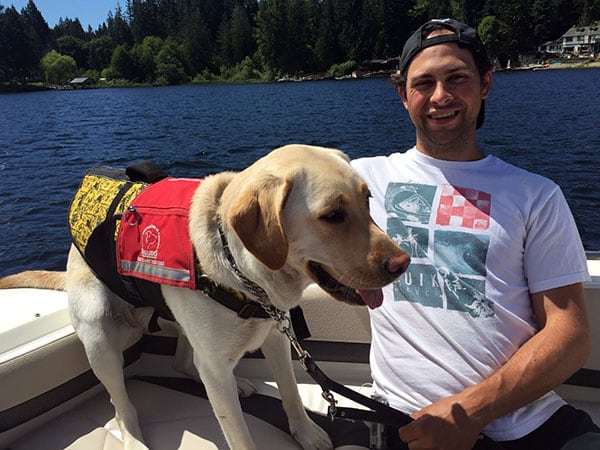
Carter and Ukita enjoy a sunny day on the water.
Diabetes alert dogs are especially useful for clients who live alone, says Lucy Harbach, an alert dog instructor with the Lions Foundation. Harbach had a client whose dog woke her up in the middle of the night. She discovered her blood sugar levels had dropped dangerously low, which she may not have recognized on her own. Her dog could have saved her life, says Harbach: “The client said if she didn’t have the dog she might not have woken up. Or, if she lost consciousness, she may not have gotten help in time because she lives all alone.”
Similarly, Carter says having Ukita has made bedtime a lot less stressful for his family. In the past, Carter has had dangerous lows and seizures at night. Having Ukita has given Carter’s wife, Abby, the confidence to leave him alone when she works an overnight nursing shift.
More than man’s best friend
It’s important to note that it takes time for dogs to recognize lows, and not everyone with diabetes is a candidate for an alert dog. Candidates go through an extensive screening process, including a physician’s report and home assessment. Then, once the candidate is approved, there is a long waiting list to get a dog. Carter says the process was worth it for him. Carter and Ukita are still learning their rhythm together, but he is amazed at how she’s transformed his life in such a short time.
“They say a dog is a man’s best friend, but once you have a dog helping you to live your life, it is more than a friendship,” says Carter. “It’s a gift.”
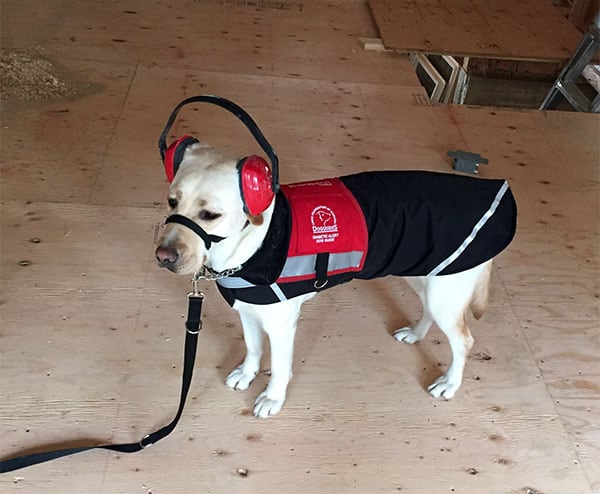
Ukita at a work site, wearing noise-cancelling headphones.
Living with diabetes is a challenge, and diabetes service dogs work to help meet that challenge. So far, 40 such dogs from the Lions Foundation have been placed. The dogs have prevented clients from losing consciousness and have helped teens living with diabetes to be more independent. Besides signaling low blood-sugar levels, diabetes alert dogs can retrieve food, bark for help and comfort their owners.
Most important, they’ve helped clients of all ages have more confidence. “Clients sometimes feel like their condition is holding them back from achieving their hopes and dreams,” says Harbach. “However, as their alert dogs start to work for them, their confidence flourishes. It's incredible.”

